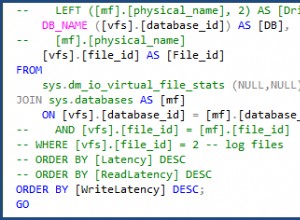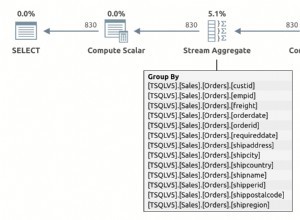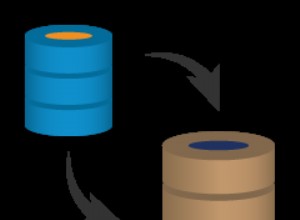Había "postgres temporal" (googlearlo) pero no sé si todavía se mantiene... Creo que hubo una discusión sobre la inclusión de este tipo de búsqueda en postgres pero no recuerdo el estado final. De todos modos:
Ejemplo usando box y gist :
CREATE TABLE segments( start INTEGER NOT NULL, stop INTEGER NOT NULL, range_box BOX NOT NULL );
INSERT INTO segments SELECT n,n+1,BOX(POINT(n,-1),POINT(n+1,1)) FROM generate_series( 1, 1000000 ) n;
CREATE INDEX segments_box ON segments USING gist( range_box );
CREATE INDEX segments_start ON segments(start);
CREATE INDEX segments_stop ON segments(stop);
EXPLAIN ANALYZE SELECT * FROM segments WHERE 300000 BETWEEN start AND stop;
Index Scan using segments_start on segments (cost=0.00..12959.24 rows=209597 width=72) (actual time=91.990..91.990 rows=2 loops=1)
Index Cond: (300000 >= start)
Filter: (300000 <= stop)
Total runtime: 92.023 ms
EXPLAIN ANALYZE SELECT * FROM segments WHERE range_box && '(300000,0,300000,0)'::BOX;
Bitmap Heap Scan on segments (cost=283.49..9740.27 rows=5000 width=72) (actual time=0.036..0.037 rows=2 loops=1)
Recheck Cond: (range_box && '(300000,0),(300000,0)'::box)
-> Bitmap Index Scan on segments_box (cost=0.00..282.24 rows=5000 width=0) (actual time=0.032..0.032 rows=2 loops=1)
Index Cond: (range_box && '(300000,0),(300000,0)'::box)
Total runtime: 0.064 ms
Como puede ver, el índice esencial es ridículamente rápido aquí (¡1500 veces! lol) (y puede usar muchos operadores como superposiciones, está contenido, contiene, etc.
http://www.postgresql.org/docs/8.2/static/functions-geometry.html




